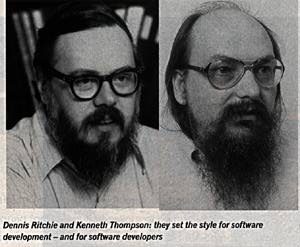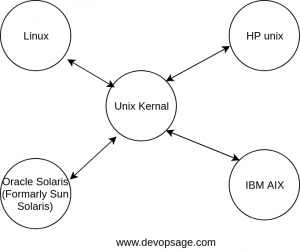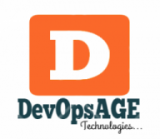Introduction
Linux is the most widely and the most popular operating system kernel in use for a couple of decades when we talk about Information Technologies. When we talk about Linux, it’s everywhere, from Smartphones, Super Computers, cars, and other multiple appliances. Linux is multi-tasking, multi-user operating system Kernel just like another Operating system we have like Windows, Mac etc. whose functionality is usually to manage your software and hardware.
In Information technology usually, we deal with mission-critical data that are collected, managed, Analysed and processed to create an application. To make this application available for the world through the web interface, it needs to be running on some machine continuously and here Linux comes in the picture, it is stable, least virus infected, reliable and easy to manage using the command line. The use cases are infinite, We are just trying to highlight few.
As Linux itself is using the Unix Kernel we will start with the history of Unix First.
Unix Principles
-
- In Unix, everything is a file: Unix System has many powerful utilities and creates and manipulate files. The Unix security models are based around the security of files by simply treating everything as a file. You can secure files the way you can secure your hardware.
-
- Small Single purpose program.
-
- Avoid captive user interfaces.
-
- Unix has an ability to chain programs together to perform complex tasks, Core design features of Unix is that output of one program can be the input to another. This gives the user an ability to combine many small programs to large and complex tasks.
- Configuring data stored in the text: storing all the configuration in a single files makes it easy for an administrator to copy or move it from one machine to another. We also have an ability to roll back system configurations to a particular date and time.
Before we look into the history of Linux, first will talk about the Unix history as other Operating systems like, IBM AIX, Oracle Solaris, HP Unix and Linux itself uses Unix Kernel.
Unix History
 Unix was first created in 1969 for internal use and was later released in 1970 by Dennis Ritchie and Ken Thompson at AT&T, Bell Laboratories. The released version of Unix was later written in C to make it portable.
Unix was first created in 1969 for internal use and was later released in 1970 by Dennis Ritchie and Ken Thompson at AT&T, Bell Laboratories. The released version of Unix was later written in C to make it portable.
The Unix started to be Copied, modified and Adopted by many Institutions and for Several business purposes due to its Availability and portability. In the 90s, AT&T files a lawsuit against the University of California for using their Unix Source code and developing Berkeley Software Distribution (BSD). The Computer System Research Group (CSRG) from UC Berkely created BSD based on the 6th edition of Unix using Unix Source Code which later strongly limited the development and adoption of BSD.
In 1983, Richard Stallman started the GNU project with the goal of creating a free UNIX-like operating system (free Unix Clone). He as a part of his work wrote the GNU General Public License (GPL), but by the early 90s, there was almost adequate available software was available to create a full operating system and resulted in the failure of GNU kernel, called Hurd which result in leaving GNU incomplete.
Later in 1987 Minix was introduced which was similar to Unix with an intention of using it for the academic purposes by Andrew S. Tanenbaum. He was also the author of Operating Systems: Design and Implementation.
History of Linux Origins/Creation of Linux.

Linus Torvalds
Linux was first created in 1991 by a Finnish College Student, Linus Torvalds at the age of 21, he was a computer science student at University of Helsinki. He started with the project which later becomes Linux Kernel.
He wrote the program specifically for the hardware he was using and independent of an operating system because he wanted to use the functions of his new PC with an 80386 processor. The development he did was done on MINIX using the GNU C compiler.
He is also the author of the book Just for Fun which he eventually ended up with writing an Operating System kernel.
Initially, he named his invention as Freax but later by Ari Lemmke at Helsinki University of Technology who was one of the volunteer administrators for the FTP server at the time, changes its name to Linux even without consulting Linus Torvalds. However later he accepted the name Linux.![]()
 Later Open Source Development Lab was founded in 2000 with an Aim to optimise the Linux Kernel and to use it for various applications.
Later Open Source Development Lab was founded in 2000 with an Aim to optimise the Linux Kernel and to use it for various applications.
Many Companies started working on the advancement and development of Linux for using it on various application areas and started making a profit out of it even Linux kernel was open sourced and was available for free.
Many Companies using the Unix kernel created their own Operating System and started using it on their own servers. IBM Created AIX, Hewlett-Packard created HP Unix, Sun (Now Oracle) created Solaris and Redhat created Redhat Enterprise Linux.
There is more than 200+ Linux Distributions was created and few popular Linux distributions are, RHEL, Ubuntu, Suse, Kali Linux, CentOS and many more.
Eventually, I would end up with highlighting few important points that why we can select Linux.
Why Linux?
-
- Linux is a MultiUser and multitasking OS which means more than one person can be logged to the same Linux machine all together at the same time.
-
- A user can have more than one program executing at the same time.
-
- Wide hardware support: Supports most X86 compatible PC hardware unlike other (HP-UX, Solaris, AIX) which is hardware dependent.
-
- Fully Supported: RedHat Linux has fully supported the distribution of Linux Kernel managed by RedHat Inc. which provides many support programs for the smallest to the largest companies.
-
- Fresh Implementations of Unix API.
-
- OpenSource Development Models which supports a wide variety of hardware.
- Supports many networking protocols and configurations.
References,
Wikipedia.
